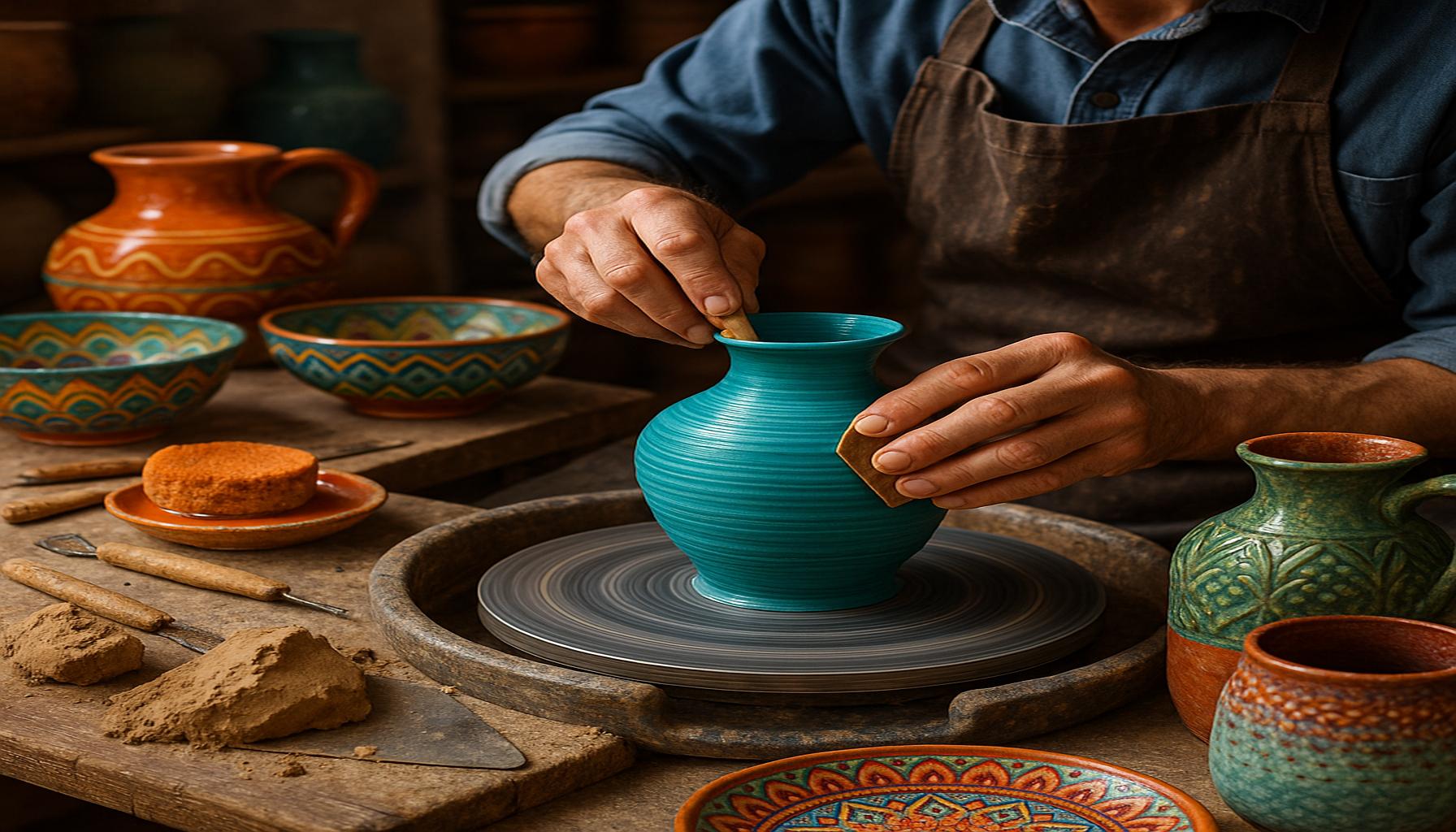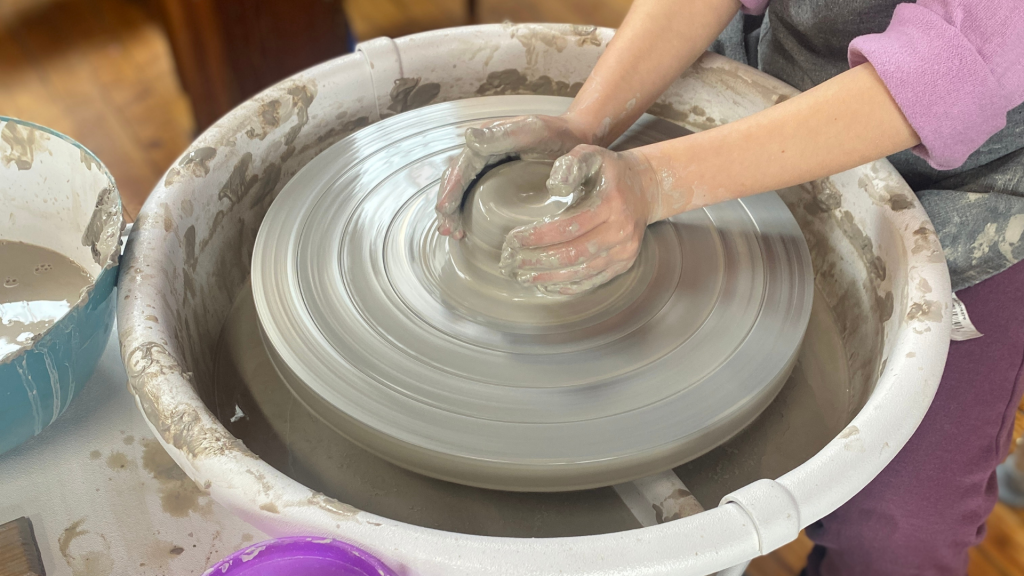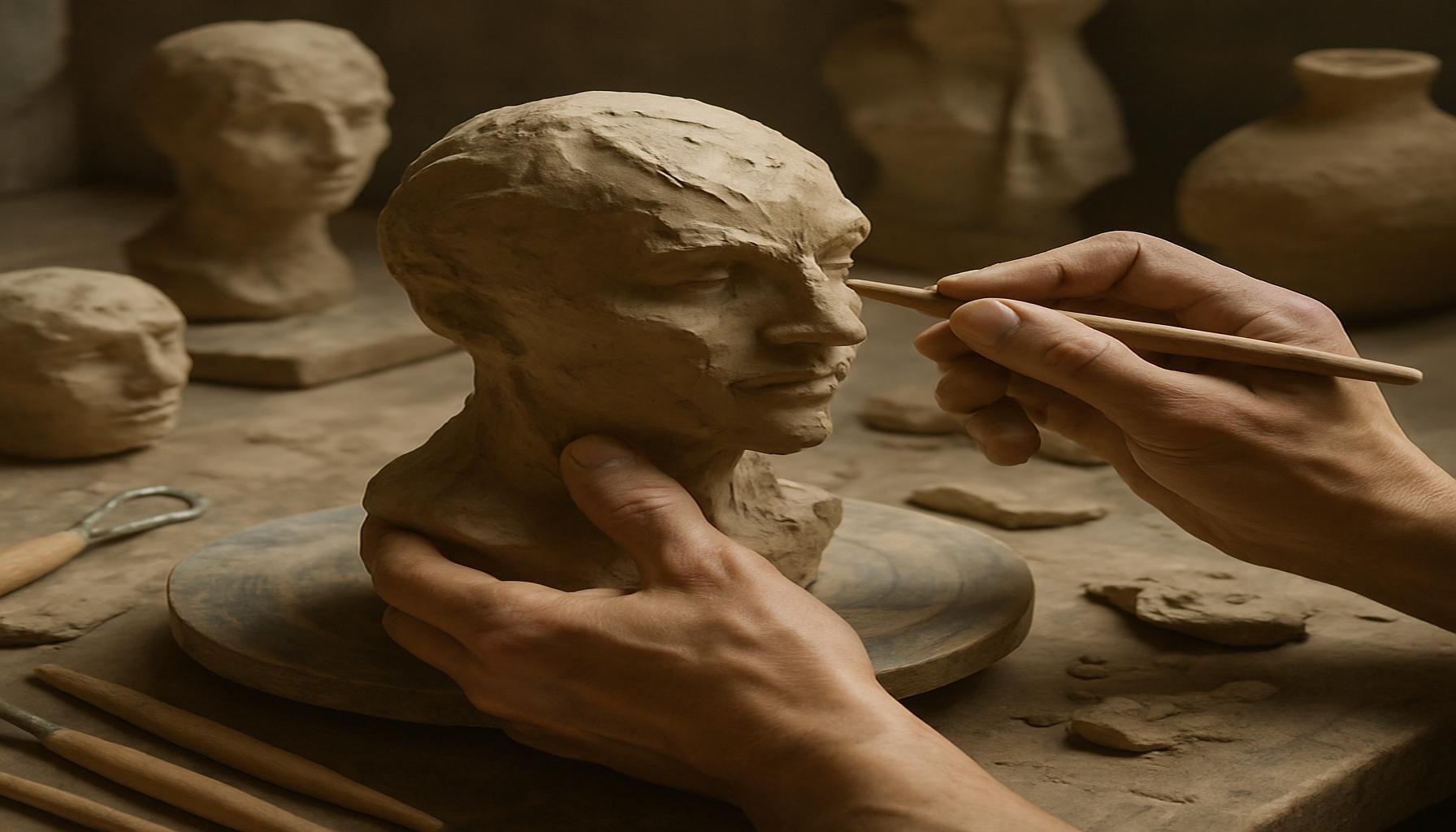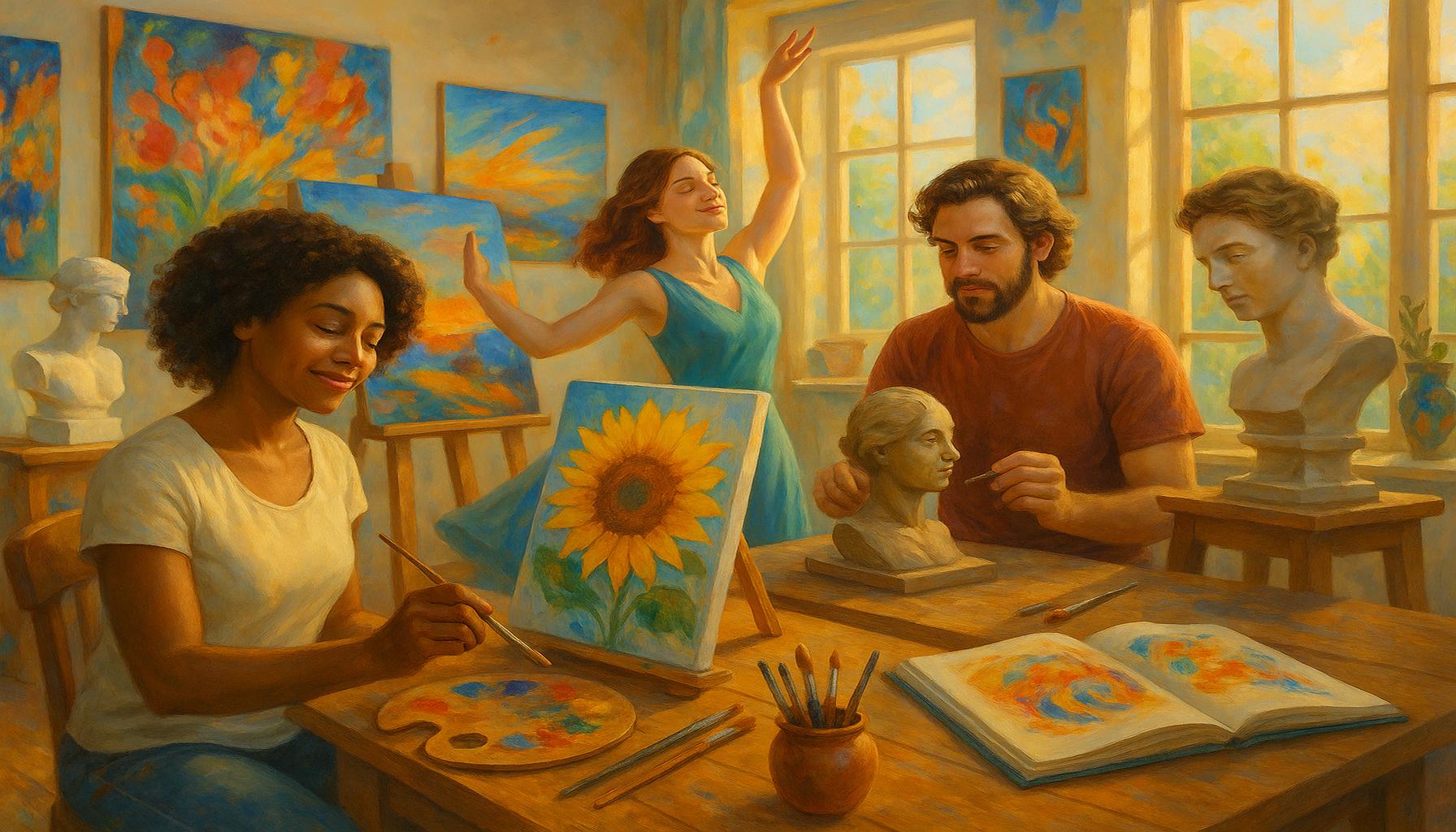The Art of Ceramics: Between Tradition and Innovation in the Creation of Functional Pieces

Exploring the Intersection of Heritage and Creativity
The world of ceramics is a vibrant tapestry woven with tradition and innovation. As ancient as it is modern, this art form serves not just aesthetic purposes but also brings functionality into daily life. From rustic pottery to sleek, contemporary designs, ceramics reflects cultural heritage while embracing new technologies.
Key Elements of Ceramics
- Historical Significance: Ceramics have been integral to human civilization for thousands of years, with evidence of early clay vessels dating back to 29,000 BC. Across cultures—from the intricate porcelain of China to the earthenware of Native American tribes—ceramics have played vital roles in daily life, trade, and ritual.
- Craftsmanship: Traditional techniques, such as hand-throwing on a wheel and sculpting, have been passed down through generations. For instance, the community of potters in Mesa Verde, Colorado, continues the legacy of ancestral Puebloan pottery, utilizing age-old techniques to create items that celebrate their heritage.
- Innovation: In recent years, modern artists are pushing the boundaries by experimenting with new materials and methods, including 3D printing and advanced glazing techniques. Artists like Julia M. and her innovative approach to using digital tools in creating unique patterns exemplify how technology is merging with age-old craft.
In the United States, the ceramic art scene is thriving, characterized by a diverse array of styles and perspectives. Artists blend age-old methods with contemporary ideas, creating pieces that are both functional and highly artistic. These artisans often draw inspirations from:
- Regional styles: Each area, from the Appalachian Mountains to the Pacific Northwest, boasts unique ceramics styles that reflect their cultural backgrounds. For instance, the iconic pottery of the Southwest showcases intricate designs influenced by Native American traditions.
- Modern design principles: Many ceramicists adopt minimalism as a design philosophy, favoring clean lines and simple forms that emphasize functionality—a trend evident in the works of notable artisans like Heath Ceramics in California.
- Environmental consciousness: There’s an increasing emphasis on sustainable practices as artists prioritize eco-friendly materials and methods. Many ceramicists are now sourcing clay locally and utilizing natural glazes to minimize their environmental footprint.
This fusion of tradition and innovation not only enriches the ceramic arts but also invites exploration and appreciation. Workshops and galleries across the country are accessible for those interested in delving deeper into this fascinating craft. Institutions like the Archie Bray Foundation in Montana and the Penland School of Crafts in North Carolina offer programs that encourage budding ceramicists to explore their creativity while honoring traditional techniques.
As we continue to navigate this vibrant field, the interplay of heritage and artistic innovation in ceramics delivers a promise of continued evolution in functional artistry. The grace and adaptability of this medium call on us to discover its stories, techniques, and the remarkable artistry inherent in each carefully crafted piece.
DISCOVER MORE: Click here to dive deeper

Bridging the Past and Present
The evolution of ceramics is a captivating journey that encapsulates the essence of human creativity and adaptability. From the ancient craft of handmade pottery to the cutting-edge innovations of today, the art of ceramics continuously finds new expressions while remaining deeply rooted in its historical context. This dynamic interplay between tradition and innovation fosters a rich landscape in which functional pieces both serve daily needs and tell captivating stories of cultural significance.
The Role of Tradition in Ceramics
Tradition is the cornerstone of ceramic arts, providing a foundation upon which contemporary artists build. The techniques honed by generations of artisans are still revered and practiced, maintaining the authenticity of the craft. Specific traditional methodologies—the way clay is prepared, thrown on a wheel, and glazed—are often reflective of the region and its cultural nuances.
- Regional Techniques: For example, the pottery of the Appalachian region often employs salt glazing, a technique that involves adding salt to the kiln during firing, yielding unique textures and colors. Meanwhile, the folk pottery of the South showcases diverse forms shaped by African, European, and Native American influences.
- Symbolism: Many traditional ceramic pieces are laden with symbolism, with specific patterns or colors representing stories, beliefs, or environmental elements significant to the culture. This storytelling aspect enhances the functional aspects, allowing each piece to become a conversation starter.
- Community Practices: Collaborative endeavors, such as community kiln firings or shared studios, serve to strengthen communal ties among artists while preserving local methodologies. Closing the gap between generations, these practices are crucial in educating new potters about their heritage.
Innovation in the Ceramic Landscape
As we look to the present, numerous ceramic artists are eagerly merging innovation with time-honored traditions. One driving force in this transformation is technology, which has opened doors to unexplored realms of creativity. Artists are not only applying advanced machinery like 3D printers to conceptualize their visions but are also experimenting with novel materials and surfaces.
- 3D Printing: This technology enables artists to create complex patterns that were previously difficult to achieve by hand. As contemporary potters experiment with 3D modeling software, they are crafting pieces that challenge conventional aesthetics while retaining functionality.
- Eco-friendly Practices: In response to growing environmental concerns, many ceramic artists are prioritizing sustainability. By opting for locally-sourced clay and developing natural glazes, they are reducing their ecological impact while creating pieces that reflect both beauty and responsibility.
- Artistic Collaborations: Innovative partnerships between ceramicists and designers result in functional art that blurs the lines between use and beauty. These collaborations yield limited-edition releases of dishware or home decor that elevate ordinary items into extraordinary statements.
The weaving of tradition and innovation fuels the ongoing dialogue within the ceramic arts community. This dialogue not only transcends geographical boundaries but also earns the craft a place in the contemporary art scene. As we delve deeper into this captivating realm, we uncover layers of its history, the stories of its practitioners, and the endless possibilities that lie ahead in the creation of ceramic functional pieces.
The world of ceramics stands as a fascinating intersection of tradition and innovation, revealing a rich tapestry of cultural heritage woven into every piece crafted by skilled artisans. In exploring the art of ceramics, one uncovers not only the time-honored techniques passed down through generations, but also the cutting-edge methods that redefine the creation of functional pieces. The traditional aspects of ceramics are deeply rooted in various cultures, each with unique styles and practices. For instance, the Japanese tea ceremony showcases the aesthetic beauty of handcrafted pottery, echoing the spirit of mindfulness and appreciation for everyday objects. Artisans use simple tools to shape their creations, adhering to historical firing techniques that preserve the authenticity of the art form. On the contrary, modern innovators utilize technology such as 3D printing and mixed media, expanding the possibilities of design, functionality, and sustainability in ceramics.Additionally, the fusion of traditional practices with contemporary styles leads to a new appreciation for functionality. Artists and potters are now experimenting with glazes and materials that enhance durability and usability, making pieces that are not merely decorative but also serve practical purposes in daily life. This evolution emphasizes the versatility of ceramics, from tableware to decorative items, while also addressing environmental concerns by integrating sustainable practices in production.Moreover, the rich dialogue between past and present reflects a broader trend towards embracing artisanal craftsmanship in a world increasingly dominated by mass production. Consumers are becoming more conscious of the stories behind handmade goods, valuing the uniqueness and quality that traditional ceramics provide. This shift not only supports local artisans but also fosters a deeper connection between people and the functional art forms that populate their homes.Exploring the art of ceramics reveals a dynamic landscape where heritage meets ingenuity. As artists continue to push the boundaries of conventional practices, the creation of functional pieces becomes a canvas for imaginative expression, inviting individuals to participate in a multifaceted dialogue about culture, utility, and innovation. By intertwining techniques of old with visions of the future, the craft of ceramics continues to evolve, offering endless opportunities for discovery and appreciation.
DIVE DEEPER: Click here to explore the evolution of techniques
The Impact of Cultural Exchange
The global exchange of ideas has had a profound influence on the evolution of ceramics, enriching the medium with diverse styles and methods from across the world. This cultural interchange is pivotal in how contemporary artisans navigate the delicate balance between heritage and modernity, creating ceramic works that reflect a tapestry of influences while maintaining practicality in design.
Global Influences and Aesthetic Diversity
Ceramics have been shaped significantly by cultural collisions throughout history. Many contemporary ceramic artists draw inspiration from international pottery traditions, melding these with personal or regional styles. Such cross-pollination leads to a unique fusion of aesthetics and techniques that resonate with a broader audience.
- Japanese Ceramics: Known for their meticulous craftsmanship and meditative beauty, Japanese ceramics—in particular, the styles of raku and shino—have influenced potters around the world. American artists have embraced these techniques, infusing them with local sensibilities to create pieces that honor both the craft’s origins and contemporary tastes.
- Mexican Folk Art: Traditional Mexican pottery, characterized by vibrant colors and intricate designs, serves as a vital influence for many U.S. ceramicists working in the southwestern region. By incorporating bright glazes and patterns into functional ware, they celebrate this rich heritage while innovating for modern markets.
- Indigenous Techniques: Native American potters are regaining prominence, with artists revitalizing ancestral methods and designs that often incorporate natural resources and local storytelling. This revival not only preserves ancient knowledge but also inspires fresh interpretations within the functional ceramics realm.
Community Engagement and Education
Another essential facet of the dialogue between tradition and innovation in ceramics is community involvement. This aspect reveals how local interactions can inform and inspire artists, promoting a sense of belonging while fostering the craft’s evolution.
- Workshops and Education Programs: Many ceramic studios and art centers in the United States host workshops to educate the public about different ceramic techniques, both historical and modern. This not only encourages skills development but also empowers enthusiasts to appreciate the intricacy of the craft and its historical significance.
- Exhibition Platforms: Organizations dedicated to ceramics regularly curate exhibitions focusing on both traditional and cutting-edge pieces. These platforms allow artists to showcase their work and engage with audiences, generating dialogue on the relevance of ceramics in contemporary culture and its potential future.
- Participatory Projects: Collaborative art initiatives foster community ties and allow artists to explore innovative concepts through shared experiences. For instance, large-scale community ceramic installations often echo local narratives while challenging viewers to rethink functional pottery’s role in everyday life.
The intersection of tradition, innovation, and cultural exchange continues to redefine the landscape of ceramics. As new generations of artists embrace both their past and modern possibilities, the future of functional ceramics looks increasingly vibrant and diverse. By merging various influences with local practices, artisans are creating pieces that not only serve a practical purpose but also contribute to the ongoing story of ceramics as a revered art form.
DISCOVER MORE: Click here to dive into watercolor techniques
Conclusion: A Dynamic Future for Ceramics
The art of ceramics stands at a remarkable intersection of tradition and innovation, creating a vibrant space for artisans to explore and redefine functional pottery. As contemporary artists continue to embrace historical techniques while incorporating modern sensibilities, they contribute to an ever-evolving narrative that honors the rich heritage of the craft. Through cultural exchange, the fusion of styles has led to a profound aesthetic diversity that not only captivates but also makes ceramics accessible to a wider audience.
Moreover, the emphasis on community engagement and education fosters a vital connection between artisans and their surroundings. By hosting workshops and exhibitions, these initiatives empower a new generation of makers and appreciators alike, ensuring the craft’s continuity. Artists are also leveraging collaborative projects to reinvigorate local stories through ceramics, turning functional pieces into vessels of cultural expression.
Looking ahead, the future of functional ceramics appears bright and expansive. As artists draw upon ecological materials and sustainable practices, they invite us all to reconsider the role of ceramics in our daily lives. The ongoing dialogue between heritage and innovation will continue to shape the landscape, encouraging both reverence for the past and adventurous explorations into the future. Ultimately, the journey through the art of ceramics—where tradition meets creativity—offers limitless possibilities for both creation and connection.



